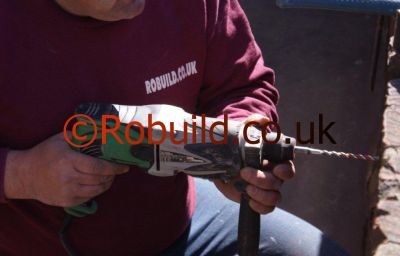Building an extensions and the neighbour is having an issue about a shared wall ? It happens quite often , especially in London area. Trial holes or trial pits for the foundations and employing a Surveyor is needed sometimes.

A trial pit for a shared wall
What is a party wall?
The main types of party walls are:
a wall that stands on the lands of 2 (or more) owners and forms part of a building – this wall can be part of one building only or separate buildings belonging to different owners
a wall that stands on the lands of 2 owners but does not form part of a building, such as a garden wall but not including timber fences
a wall that is on one owner’s land but is used by 2 (or more) owners to separate their buildings
The Act also uses the expression ‘party structure’. This could be a wall or floor partition or other structure separating buildings or parts of buildings in different ownership, such as in flats.
What the Act covers
The Act covers:
new building on or at the boundary of 2 properties
work to an existing party wall or party structure
excavation near to and below the foundation level of neighbouring buildings
This may include:
building a new wall on or at the boundary of 2 properties
cutting into a party wall
making a party wall taller, shorter or deeper
removing chimney breasts from a party wall
knocking down and rebuilding a party wall
digging below the foundation level of a neighbour’s property
What the Act covers
The Act covers:
new building on or at the boundary of 2 properties
work to an existing party wall or party structure
excavation near to and below the foundation level of neighbouring buildings
This may include:
building a new wall on or at the boundary of 2 properties
cutting into a party wall
making a party wall taller, shorter or deeper
removing chimney breasts from a party wall
knocking down and rebuilding a party wall
digging below the foundation level of a neighbour’s property
You can read more about Party Wall Act here :
https://www.gov.uk/government/uploads/system/uploads/attachment_data/file/207310/Party_Wall_etc._Act_1996_-_Explanatory_Booklet.pdf

